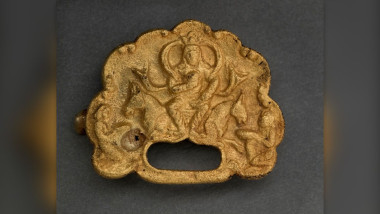1,500-year-old gold buckles depicting ruler 'majestically sitting on a throne' discovered in Kazakhstan
Archaeologists in Kazakhstan have discovered two gold ornaments in a 1,500-year-old tomb that feature the earliest known depictions of the great khan, or “khagan,” of the Göktürks — a nomadic confederation of Turkic-speaking peoples who occupied the region for around three centuries, according to an archaeologist who excavated the site.
The lavish gold plaques portray “the crowned sovereign, majestically sitting on a throne in a saintly pose and surrounded by servants,” Zainolla Samashev, an archaeologist at Kazakhstan’s Institute of Archaeology who led the excavation, told Live Science in an email. “This clearly depicts the sacred nature of power in ancient Turkic society.”
The finds are from the Eleke Sazy site near Kazakhstan’s remote eastern borders with China, Mongolia and Russian Siberia, where Samashev and his colleagues have worked since 2016.

Add comment